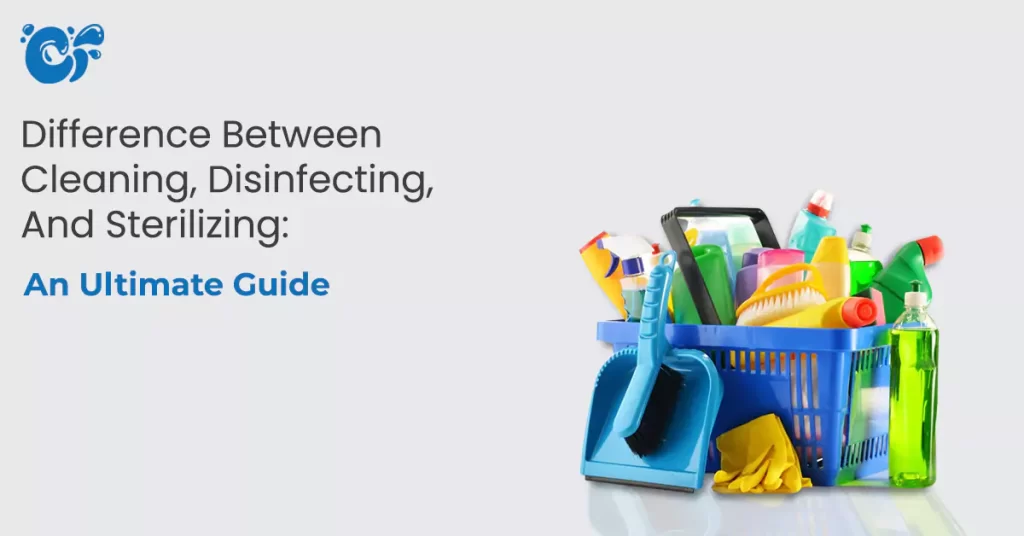Knowing the distinctions between cleaning, disinfection, and sterilization is crucial for a clean and sanitary workplace. Each procedure has a special responsibility for preserving health and safety. This blog explains the variations and offers helpful advice to assist you in maintaining a clean, sanitary, and secure environment.
Continue reading to learn exactly what is the difference between cleaning, disinfecting, and sterilizing.
What Is The Difference Between Cleaning
To maintain a hygienic environment, cleaning, disinfecting, and sterilizing are independent activities with different goals. Let’s discuss what is cleaning and sanitizing in detail.
-
Cleaning
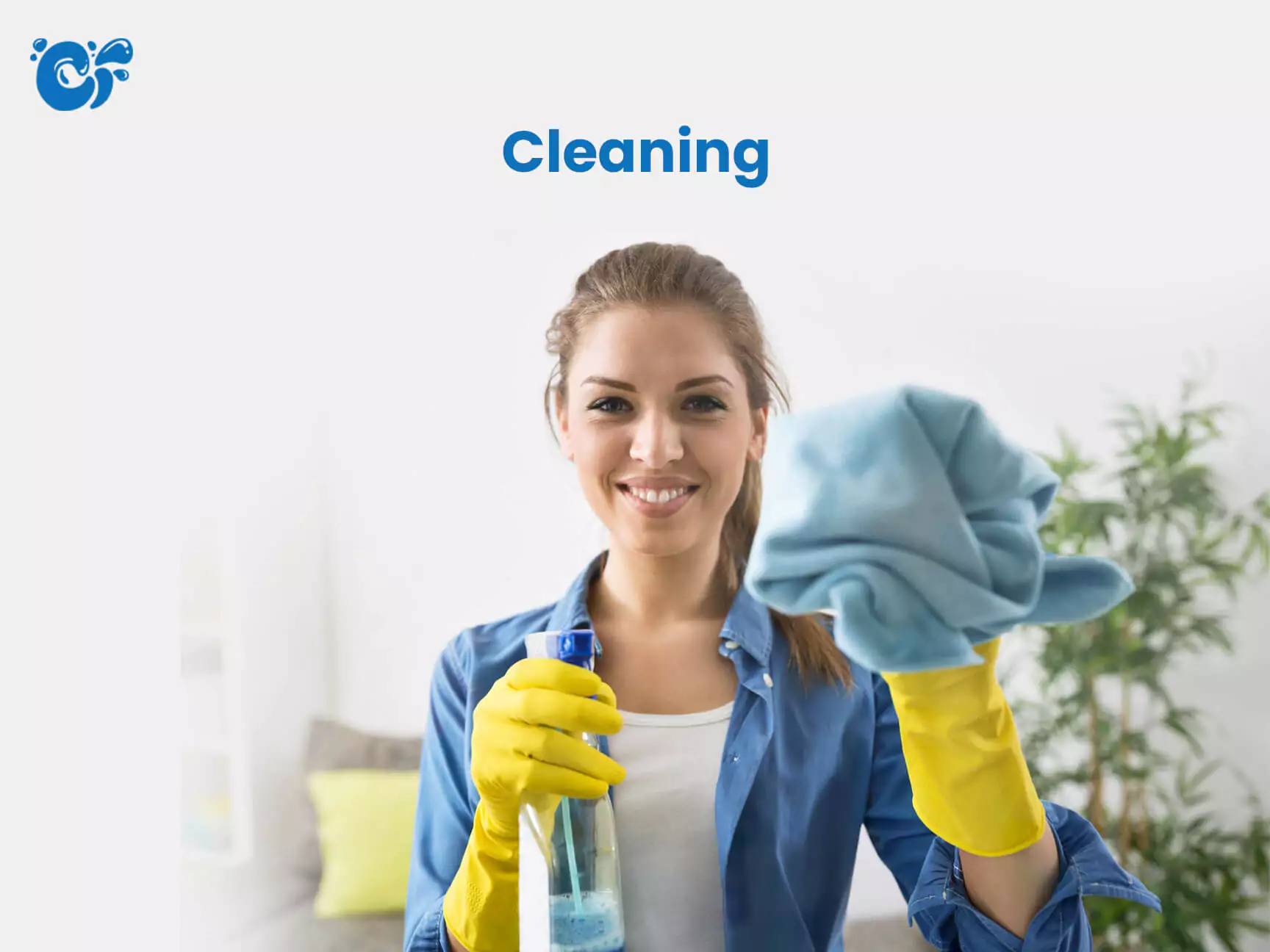
Cleaning is fundamental to eliminating surface-level dust, grime, dust, and debris to maintain a clean and tidy environment. It is a crucial daily living component since it makes homes, workplaces, and public spaces more aesthetically pleasing and clean.
The two primary categories of cleaning are:
-
Regular Cleaning
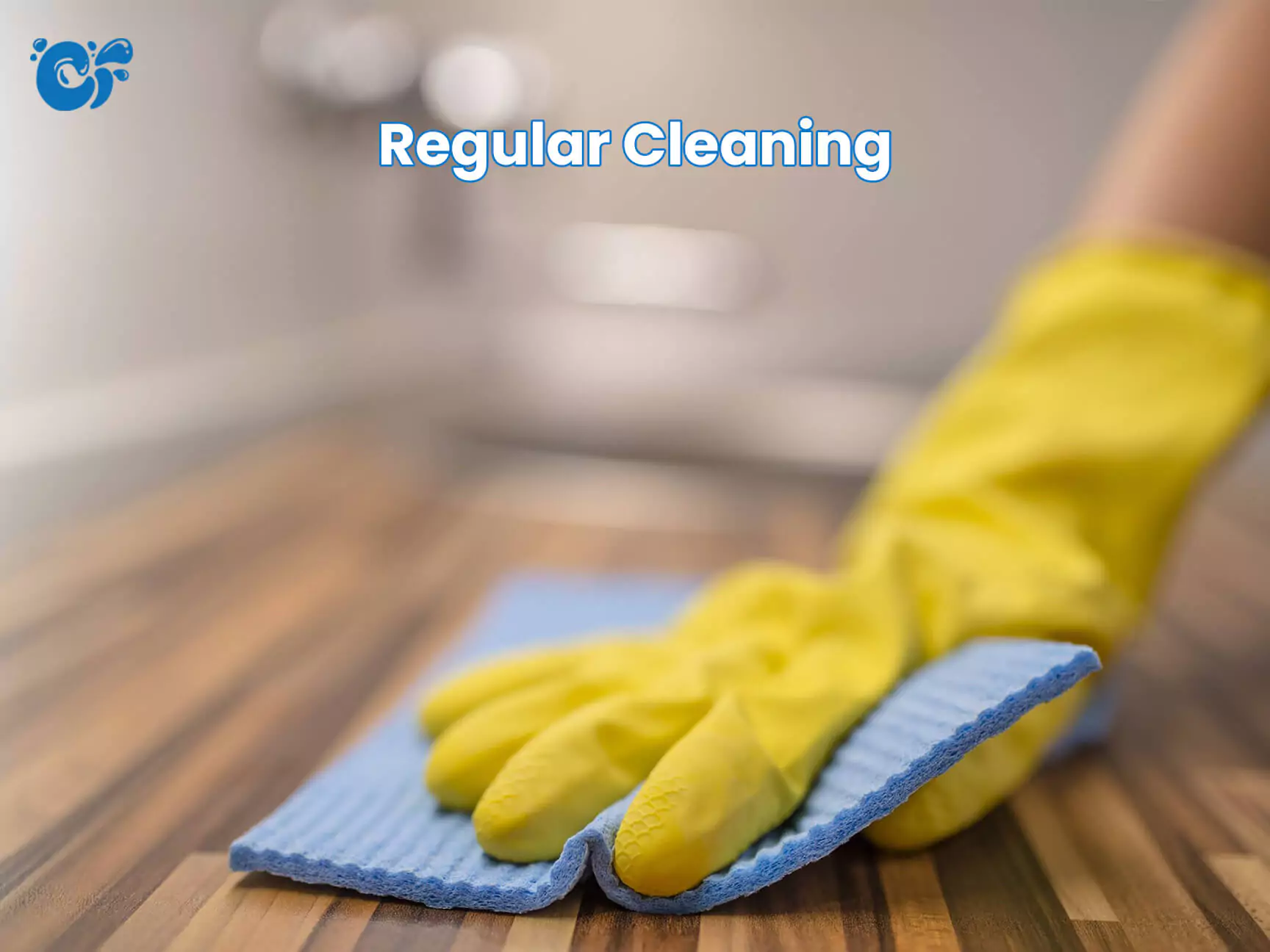
Dusting, sweeping, mopping, and vacuuming the floors are usual cleaning chores. To maintain the places neat and appealing, it emphasizes clearing away dirt and garbage.
Regular cleaning is necessary for everyday maintenance and to stop the growth of bacteria and dirt.
-
Deep Cleaning
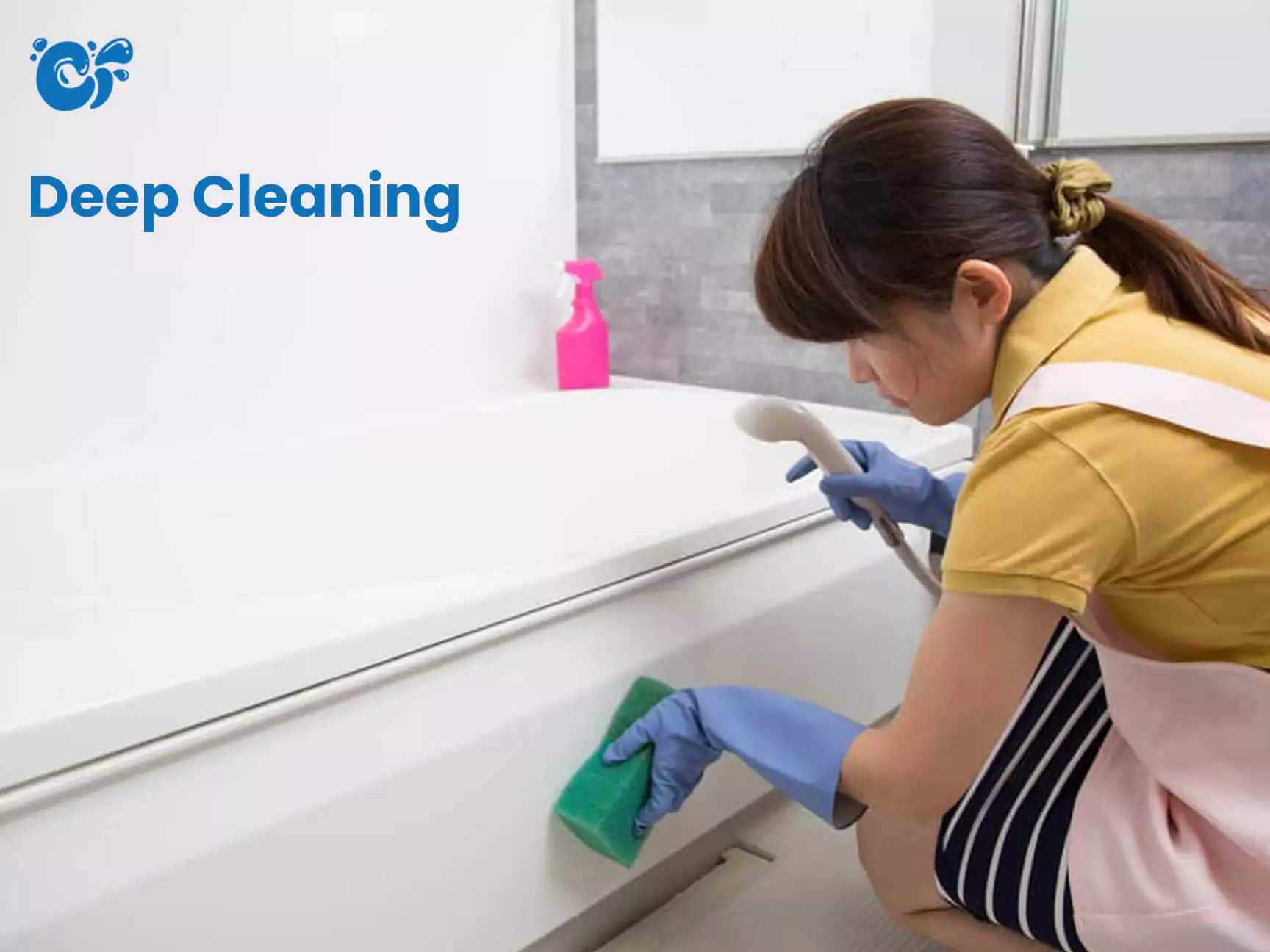
Deep cleaning is a challenging procedure requiring extensive cleaning to reach areas that standard cleaning cannot. After cleaning, services include belt installation, curtains, laundry, and interior machinery.
Deep cleaning eliminates concealed bacteria and grime, boosts general hygiene, and provides a better living or working environment.
-
Disinfecting

Disinfection involves eliminating dangerous germs like bacteria and viruses from surfaces. It is a crucial step in maintaining a clean workplace.
Target microorganisms that can lead to disease rather than just performing basic cleaning. Disinfecting kills all bacteria and viruses.
It comes in two primary categories:
-
Chemical Disinfectants
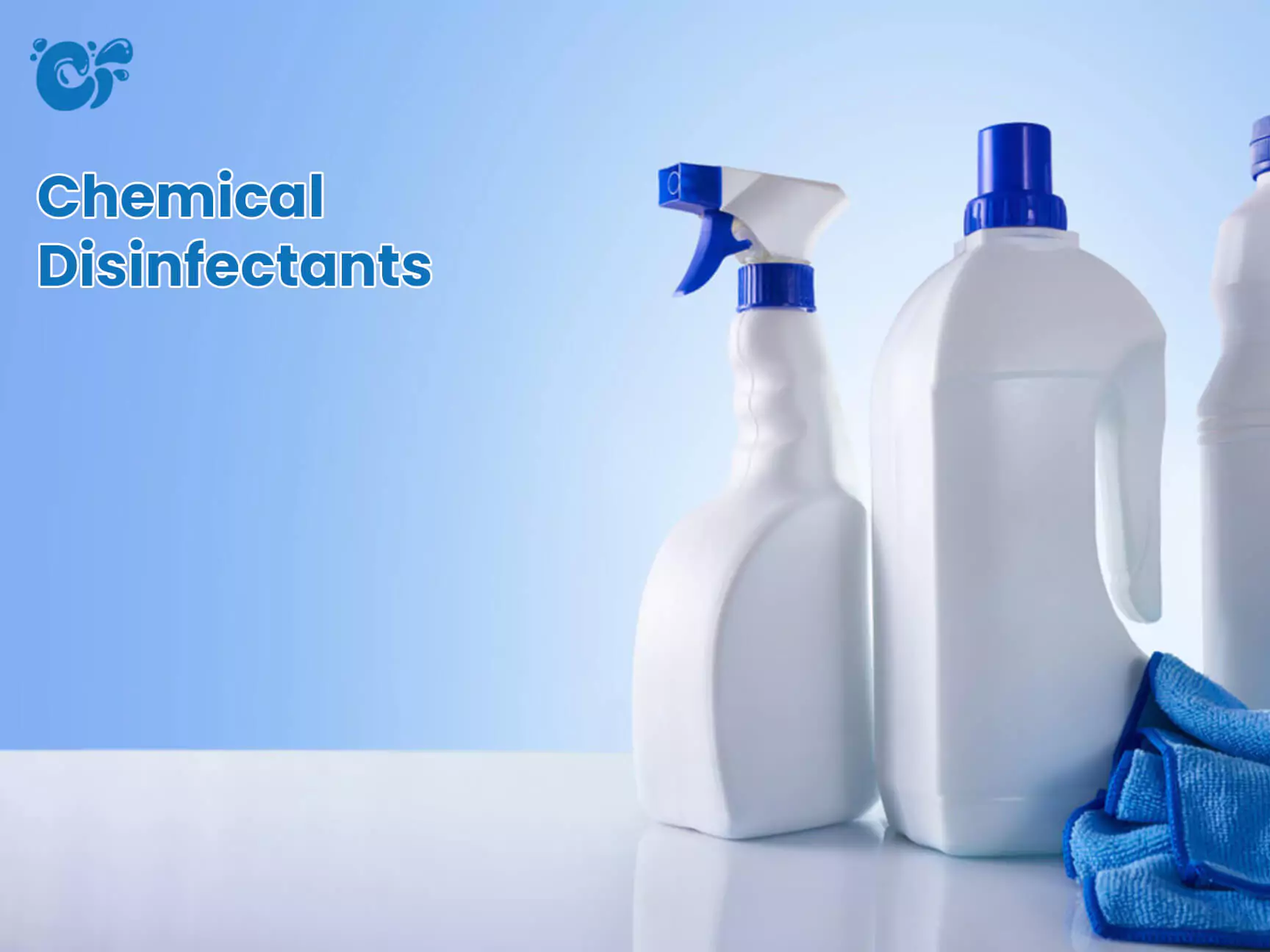
To destroy surface microorganisms, chemical disinfectants like alcohol or bleach solutions are frequently utilized. They work well to lower the risk of infection and are suitable for both residential and industrial use.
-
Natural Disinfectants

Chemical-free options for natural disinfectants include vinegar and hydrogen peroxide. They are both safe and non-toxic. It is ecologically safe and has antibacterial qualities that can efficiently eliminate microorganisms.
-
Sterilizing
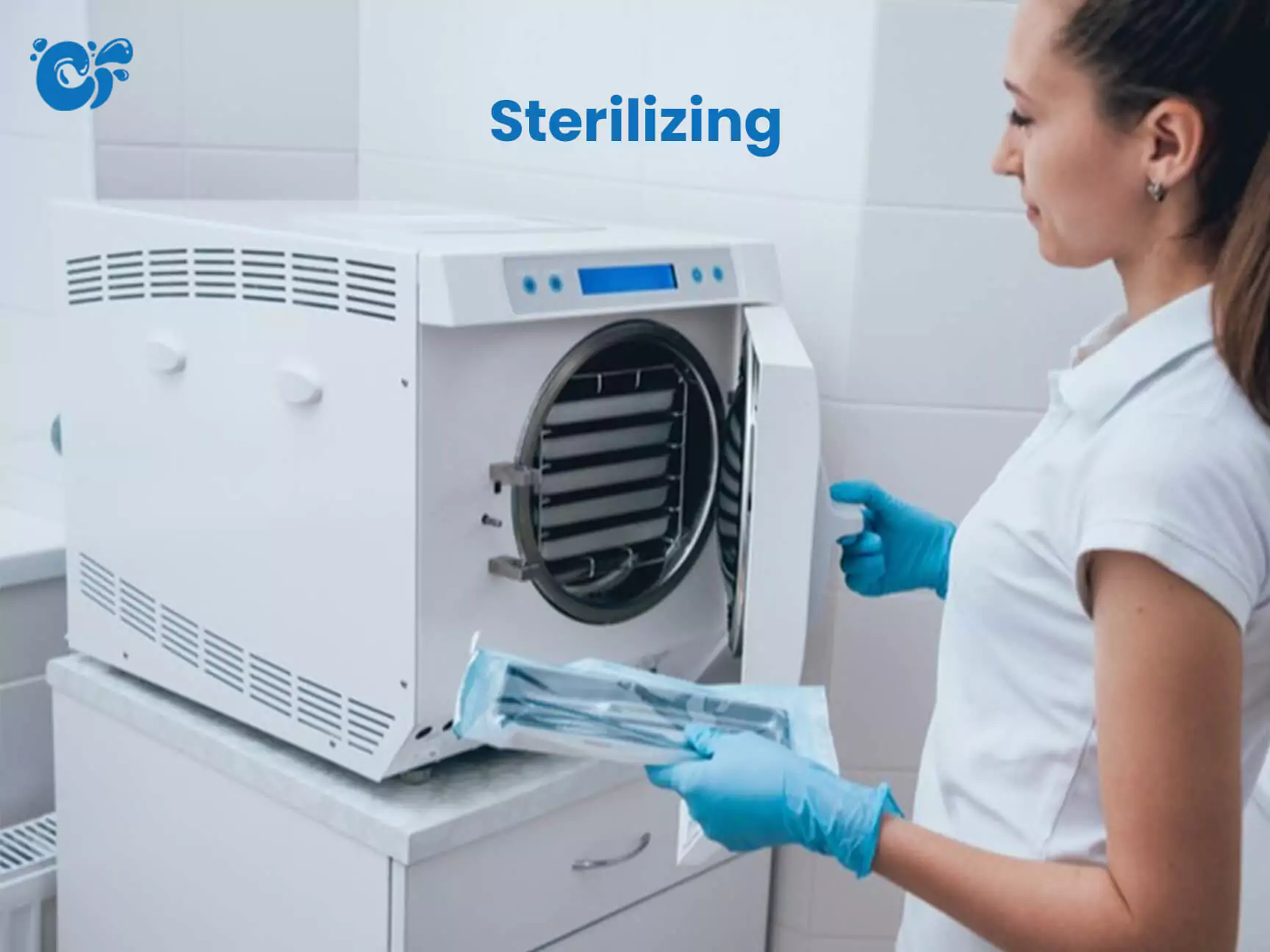
Disinfection aims to rid surfaces of tools or materials of all kinds of bacteria, viruses, fungi, and spores. This is especially crucial in hospitals and labs, where cleanliness is essential to preventing contamination and infection. Its two methods are:
-
Heat Sterilization
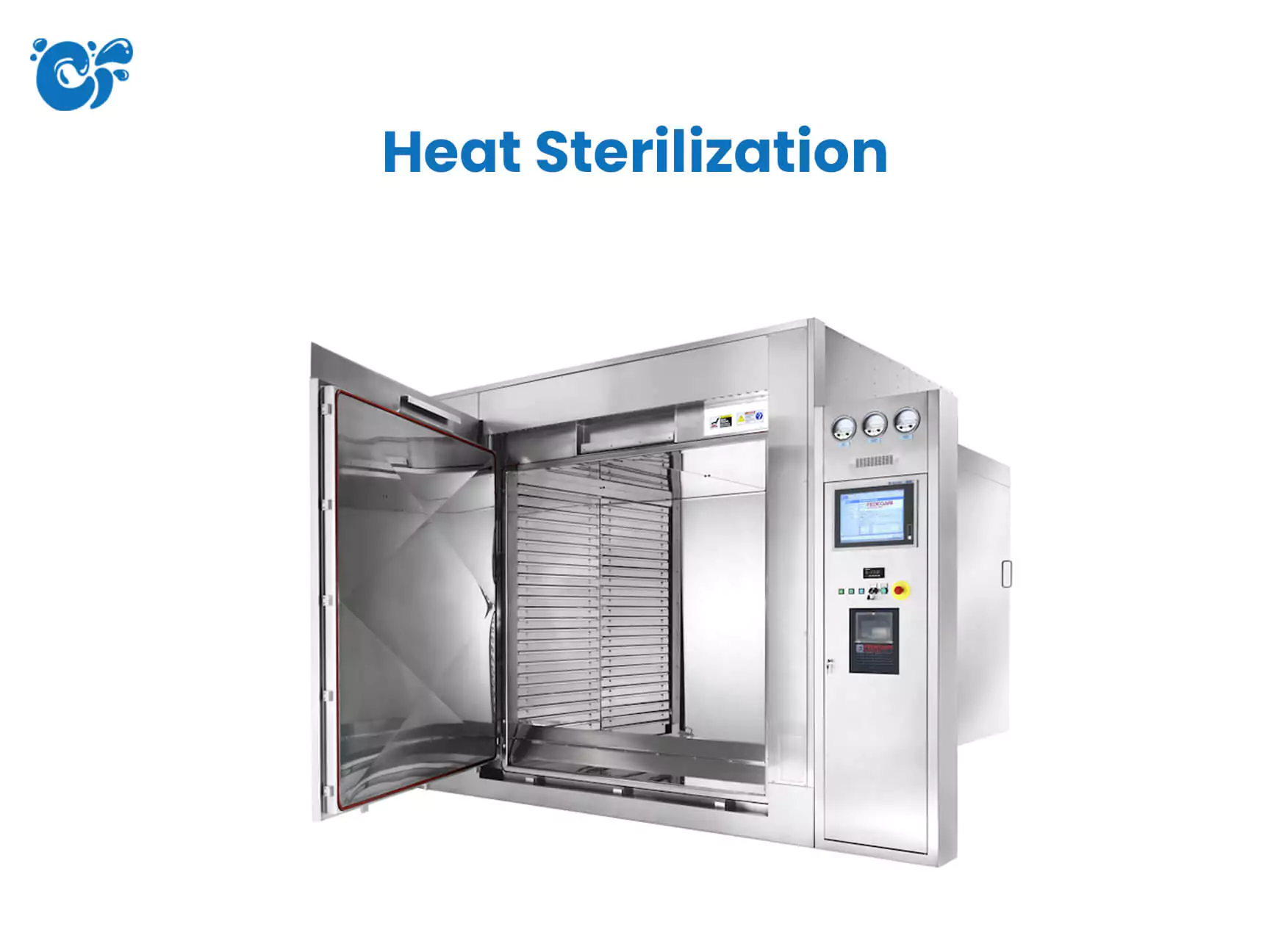
Medical equipment and disinfectants are frequently sterilized using heat. Autoclaving is one technique that can achieve the necessary temperatures while also destroying bacteria.
-
Chemical Sterilization

In some medical institutions, chemical agents like ethylene oxide gas are utilized to sterilize delicate equipment that could be heat-sensitive.
-
Sanitizing
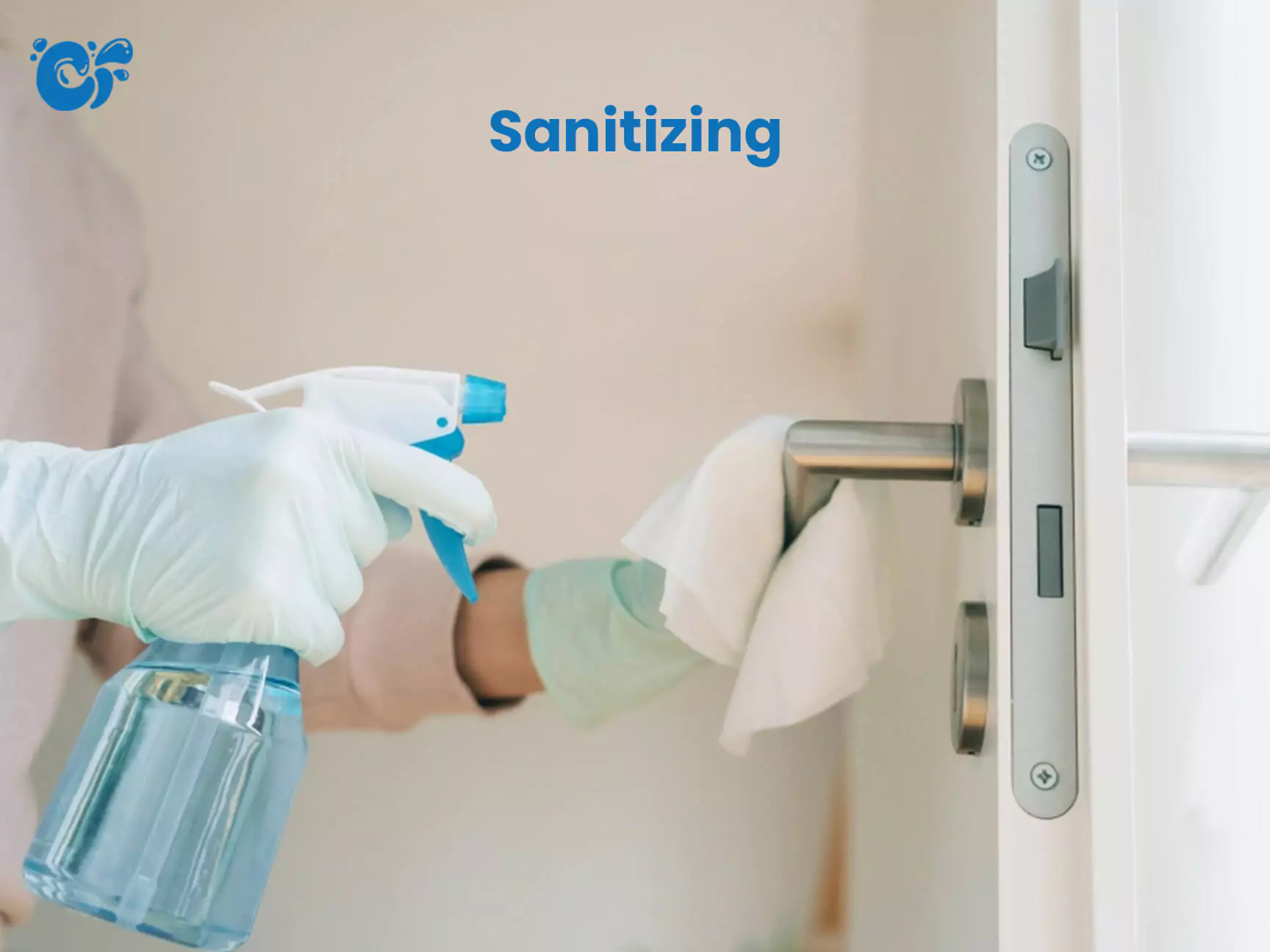
As specified by public health regulations, sanitizing brings the number of germs on surfaces down to an acceptable level. Sanitizing is an essential part of preserving hygiene and halting the transmission of disease. However, it is less intense than disinfecting or sterilizing.
There are primarily two ways to sanitize:
-
Chemical Sanitizing
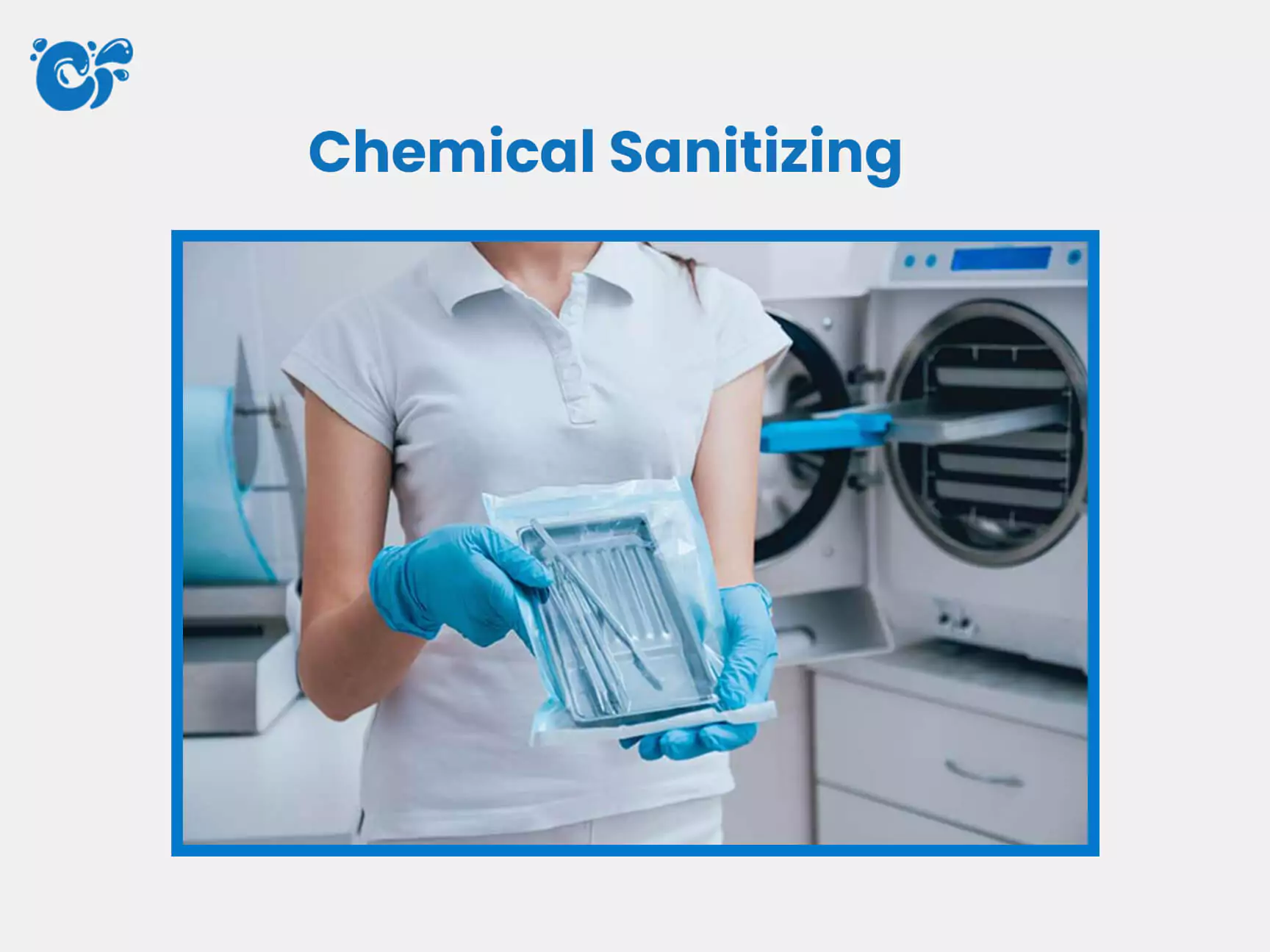
To reduce the amount of germs on surfaces, chemical sanitizers like chlorine or quaternary ammonium compounds are frequently utilized. They are frequently used in household kitchens and restaurants to guarantee safe food preparation.
-
Mechanical Sanitizing
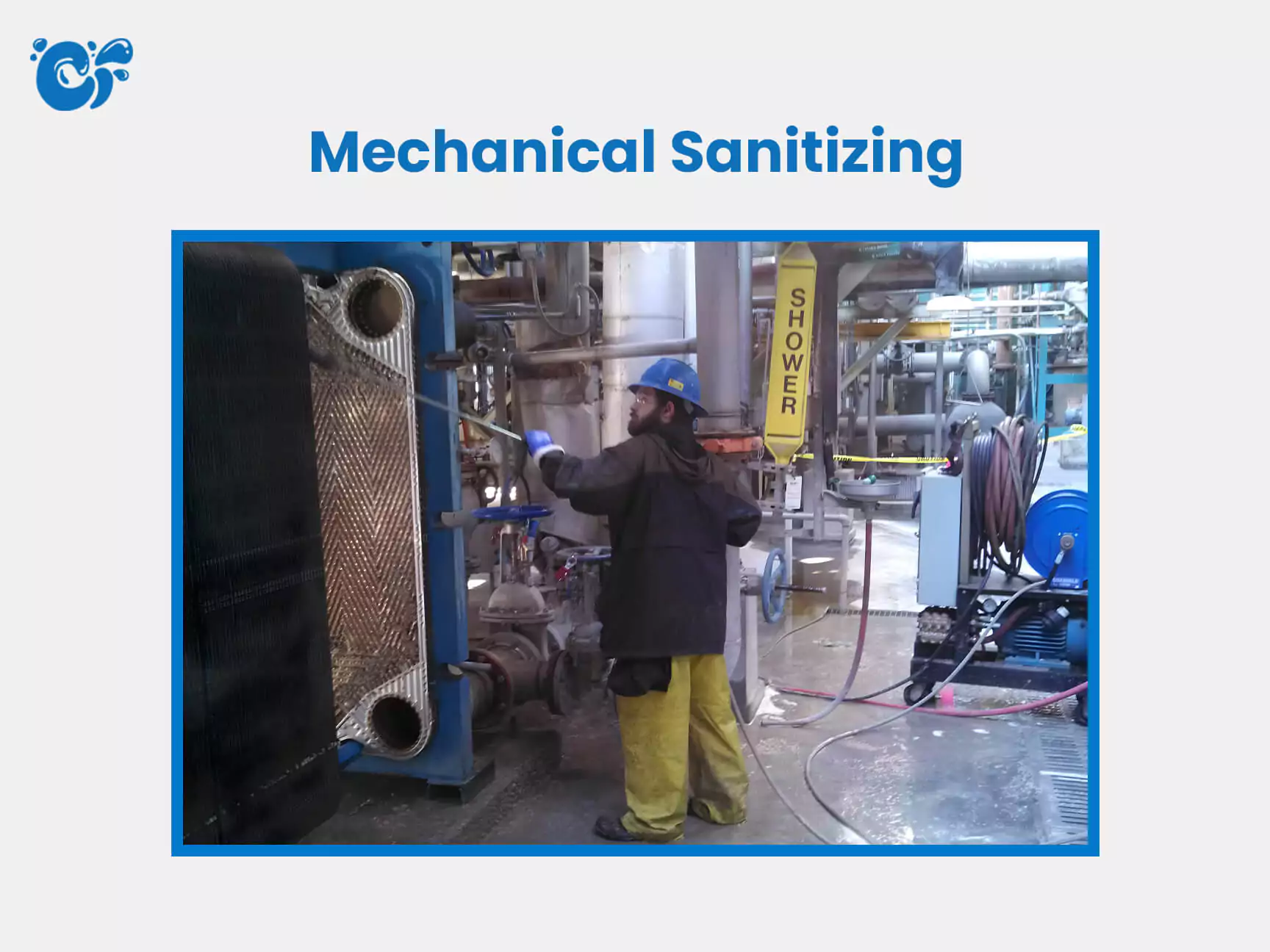
Commercial dishwashers and washing machines use mechanical methods such as heat or pressure to sanitize dishes, cutlery, and other items.
What is the Purpose of Cleaning, Disinfecting, Sterilizing, and Sanitizing?
Cleaning, disinfecting, sterilizing, and sanitizing promote cleanliness, hygiene, and safety. This is done by removing filth, eradicating dangerous bacteria, and guaranteeing a germ-free environment.
1. Cleaning

Cleaning is to keep surfaces clear of apparent dirt, dust, and debris. It maintains cleanliness and organization. Regular cleaning enhances the aesthetics and fosters a pleasant atmosphere by giving homes, businesses, and public areas a clean appearance.
This can also be the answer to what is an accurate definition of cleaning. This doesn’t necessarily eliminate all disinfectants and instead concentrates on eliminating pollutants from the top layer.
2. Disinfecting

Disinfection attempts to destroy or eliminate dangerous bacteria from the soil to lower the risk of disease. Beyond cleaning, it hunts for dangerous bacteria, viruses, and fungi.
Disinfection is crucial in settings like hospitals, schools, and public buildings where illness transmission must be stopped. You can also find many disinfectant examples at home.
3. Sterilizing

Sterilization’s ultimate objective is eradicating all microbiological life, including bacteria, viruses, and spores. It is the strictest degree of microbiological control and is necessary to protect medical institutions, labs, and the instruments and equipment they use against infection.
It is also essential to know what are the correct procedures for cleaning and sanitizing tools and equipment.
4. Sanitizing

Disinfection aims to bring the amount of surface germs down to a safe level. Disinfection nevertheless significantly impacts preserving cleanliness and halting illness transmission, despite not being as efficient as sterilization or disinfection. Food is often handled and prepared safely at grocery shops and domestic kitchens.
Why Are Cleaning, Disinfecting, Sterilizing So Important?
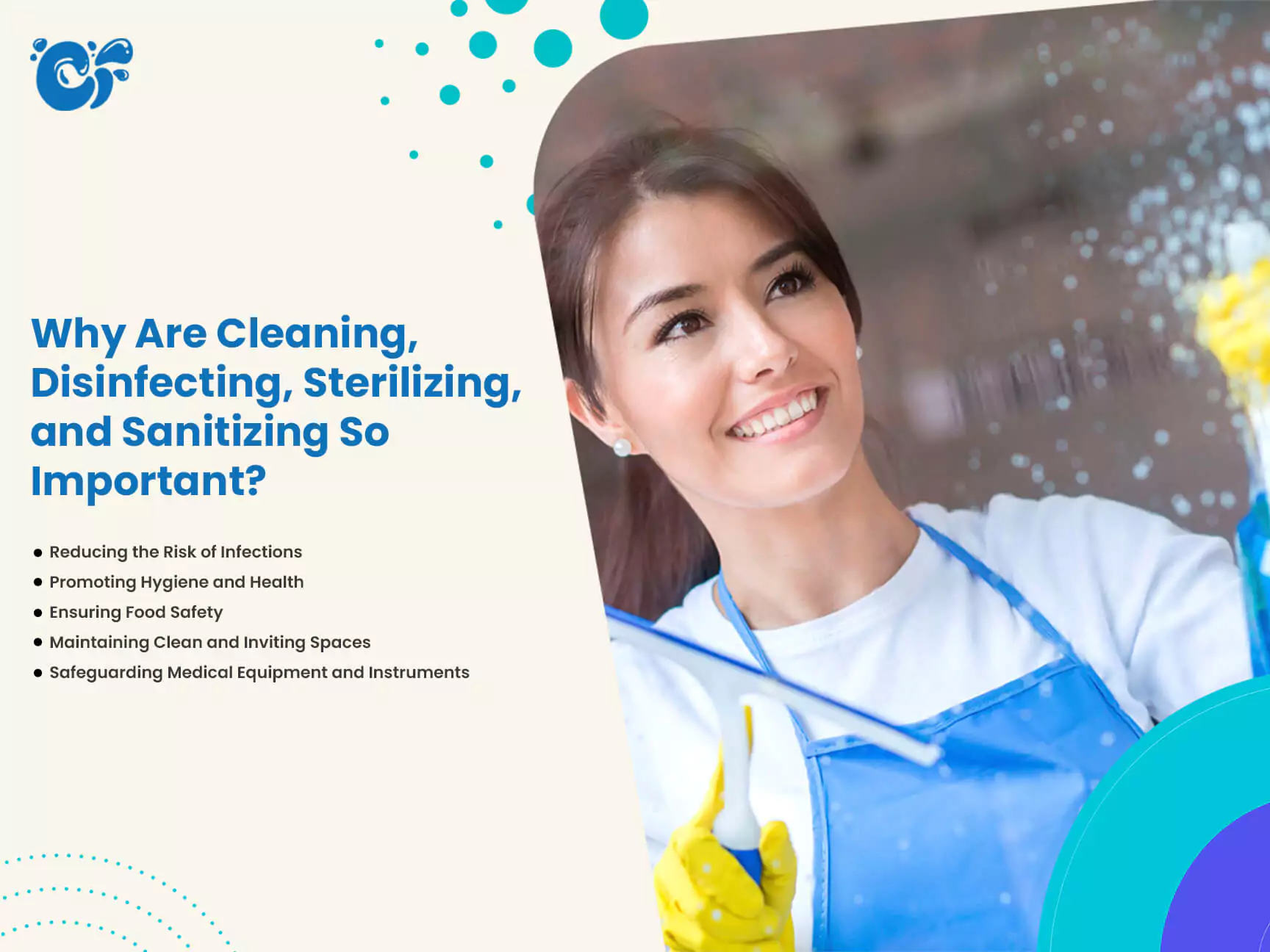
Promoting hygiene, avoiding diseases, and keeping a secure and healthy environment depends on cleaning, disinfecting, sterilizing, and sanitizing.
-
Reducing the Risk of Infections
Sterilization and disinfection are especially crucial in places like hospitals, clinics, and labs, where it’s crucial to stop the spread of illness. These procedures provide patients, medical personnel, and visitors with a secure and sterile atmosphere by eliminating dangerous bacteria.
-
Promoting Hygiene and Health
Sanitation, cleaning, disinfection, and sterilization are crucial for preserving health and hygiene. This procedure stops sickness and infection by cleaning the surface of dirt, dust, and bacteria. You should regularly wash your hands, sanitize them, and disinfect them to keep yourself and others germ-free.
-
Ensuring Food Safety
Cleaning kitchen surfaces and appliances is crucial in both commercial and residential kitchens. Foodborne disease can be avoided, and safe handling and preparation can be assured by lowering the number of germs on food contact surfaces.
-
Maintaining Clean and Inviting Spaces
Homes, workplaces, and public areas benefit from routine cleaning by looking better and feeling more pleasant. A tidy and well-maintained area has a friendly environment and makes one feel good.
-
Safeguarding Medical Equipment and Instruments
Medical sterilization is essential for guaranteeing the effectiveness and safety of medical equipment and devices. Sterilization minimizes contamination and potential health issues during treatment by removing all bacteria.
If you are looking for someone who can do the cleaning, disinfecting, sterilizing, and sanitizing for you, then hire Clean Freak OC. We are a Licensed and Insured, Residential and Commercial cleaning service provider in Ocean City, Maryland, and Delaware beaches.
Best Ways For Disinfecting: A Step-by-Step Explanation
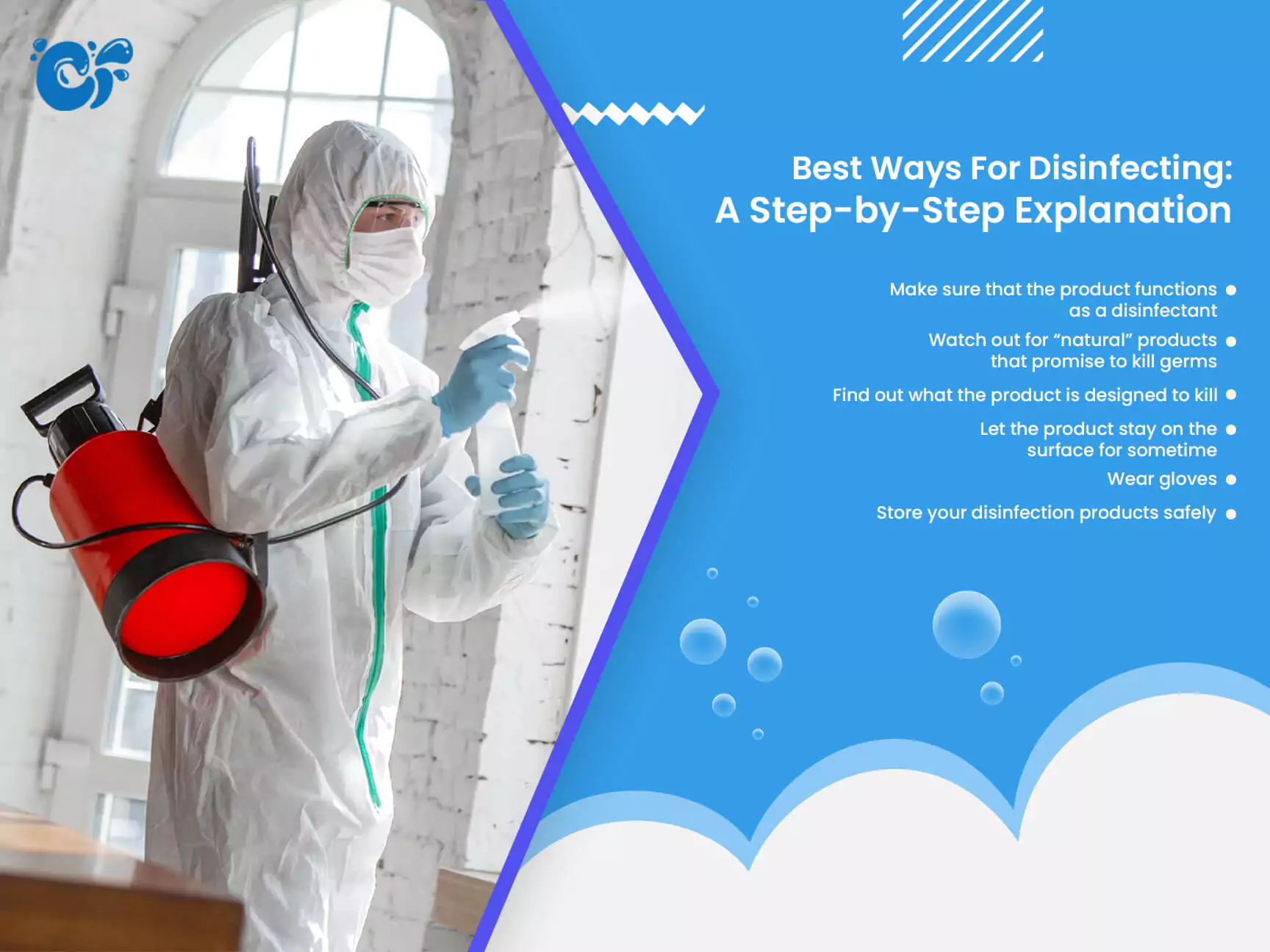
While experts usually perform sterilization, you can effectively disinfect objects and everyday surfaces at home or work.
Here are some pointers for disinfecting safely:
-
Make sure that the product functions as a disinfectant
Such usage will be disclosed on product labels by the manufacturer.
-
Watch out for “natural” products that promise to kill germs
Natural wipes and sprays could be helpful for cleaning, but they cannot kill germs like chemical disinfectants do.
-
Find out what the product is designed to kill
By reading the label, determine what kinds of bacteria, fungi, and viruses your disinfectant can eliminate. If you’re attempting to combat viruses, this is very crucial.
-
Let the product stay on the surface for sometime
Observe the directions on the product’s label for how long it should sit. Except in accordance with the directions, avoid wiping or washing the disinfectant away.
-
Wear gloves
Direct contact with these items should be avoided as it could irritate the skin.
-
Store your disinfection products safely
Reattach lids and caps firmly, and keep all goods out of children’s reach. Discard disinfectants if they are over expiration and keep them in a cold, dry area, such as a cabinet.
How Can Clean Freak OC’s Services Help Your Workplace/Home Always Stay Neat and Clean?
Our residential and commercial cleaning services are designed to provide you with neat and clean spaces. Be it a home or an office. We provide affordable cleaning services of high caliber. We clean for you to relax and enjoy a safe space. We provide different kinds of services:
-
Residential Cleaning
Cleaning the house can be difficult, and at Clean Freak OC, we get it. Finding the time and energy to clean your home might be challenging, so it looks best if you are a busy parent or worker. Regular cleaning, thorough cleaning, and move-in/move-out cleaning are just a few of our many cleaning services.
-
Commercial Cleaning
A clean environment makes your company seem better overall and fosters a more productive work environment for your staff. Finding the time and resources to clean a workplace can be difficult, especially while balancing a busy schedule. Additionally, it would be best to get a dependable cleaner because most commercial and residential cleaning service providers must be on time, which might harm your company. Here comes the role of Clean Freak OC.
Conclusion
The significance of sanitizing, sterilizing, disinfecting, and cleaning cannot be emphasized. These procedures are crucial for maintaining our health, stopping the spread of illnesses, and ensuring the environment is hygienic and welcoming. By using these strategies, we help create a community that is safer and healthier for everyone.


